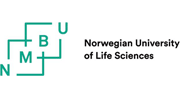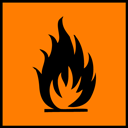Dieldrin
Traded as: Alvit, Dieldrite, Dieldrix, Illoxol, Panoram D-31, Quintox Dieldrin; Insectlack; Dieldrex; Dielmoth; Dildrin, Latka 497, Termitox, Dorytox, Illoxol, Octalox, Shelltox, Red Shield, Compus 497, Moth Snub D, Panoram D-31, SD 3417.
What is it? Organochlorinated insecticide, very toxic, classified as persistent organic pollutant (POP) and banned by the Stockholm Convention since 2001.
Use (purpose):
- Control of tropical diseases insect vectors, locusts, and termites.
- Root and sprout treatment for plants non intended for human consumption (landscaping, ornamental plants, textile plants).
It bioconcentrates in the fatty tissues of animals and it lasts approximately 5 years in the soil. It is transported at large distances from the place where it was used and it has been detected in the Arctic regions in the air, the water and in the living organisms. Part of the Dieldrin found in the living organisms is due to Aldrin metabolisation in Dieldrin by those organisms.
Present status: Since 2004 it was banned from production, sale and use in the countries having ratified the Stockholm Convention.
In Romania: forbidden since the 1980.
Health effects: Dieldrin is irritating and toxic if swallowed, inhaled or adsorbed through the skin.
- Acute effects: dizziness, headache, nausea, vomiting, malaise, sweating, involuntary muscle spasms, uncontrolled movements of the limbs, seizures with or without loss of consciousness, coma. Other effects recorded: leucocytosis, hypertension, tachycardia, metabolic acidosis, sleep and memory loss, haematuria (blood in urine), albuminuria.
- Chronic effects: carcinogenic (cancer of the lungs, liver and biliary), it induces transient impotence and sterility and middle-ear otitis in children. Abnormal intrauterine development and toxicity in animals. Toxic to birds and aquatic organisms.
- Target organs: skin, nervous system, kidneys, liver. Animal carcinogen (cancer of the lungs, liver, thyroid and adrenal glands) and probable occupational carcinogenic to humans.
Exposure limit, lethal dose: 6 micrograms/day for a 60 kg person. The ingestion of 5 g (a teaspoon) of Dieldrin can kill a grownup person.
Contamination sources:
- Occupational: People employed in agriculture (insecticide treatments) are the most exposed, if they use old pesticides containing Dieldrin (due to inhalation and accidental ingestion of the dust particles and due to skin contact).
- Food: Animal products (pasteurized milk, butter, meat, sausages, eggs) by bioaccumulation, in case those animals have been fed with fodder or oilseed cake from Dieldrin contaminated crops. The fish harvested from irrigation channels and rivers from the areas where chlordane is used for treating crops (it can accumulate in fish in concentrations up to 13,000 times the water concentration - thus the fish becomes toxic for consumption, even if the chlordane concentration in water was not toxic or even detectable). It is found in small doses in animal products from Egypt, United States and Canada, India, Vietnam but also Spain.
Useful links:









